► Your guide to electric BMWs
► All the BMW EVs available
► Current models and future ones
BMW’s electrification plans have altered frequently over the last decade, and the degree of urgency has varied wildly, between pioneering and glacial.
The i3 city car and i8 sports car were way ahead of their time when both arrived in 2013 but they were, and continue to be, hugely costly for Munich to develop and sell. What’s followed has been a series of plug-in hybrids and little else.
But the brand has big plans ahead, aiming to get 25 electrified vehicles on the road by 2023 and there’s even a fully electric iM2 on the way. That might sound like a big target but be careful – electrified does not necessarily mean emissions-free.
Further electric reading
What is an electric car and should you buy one?
How much does it cost to run an electric car?
In this handy guide, we talk you through all the different electric BMWs – explaining today’s range and revealing which battery-powered models are waiting in the wings. Keep scrolling for everything we know so far on BMW electric.
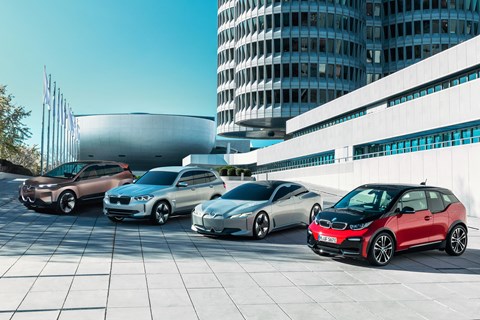
PHEVs
Plug-in hybrids are set to be ubiquitous in Munich’s line-up, as BMW aims to give the ‘power of choice’ to every potential customer. In simpler terms, that means a choice of diesel, petrol, PHEV and electric for every style of vehicle. The X3 is the first of Munich’s models to hit this target, following the launch of the electric iX3 earlier this year.
There’ll even be multiple hybrids to choose from; for the 5-series BMW has revealed a 545e hybrid as well as a 530e hybrid, so customers can choose between multiple PHEVs in each model range. Of course, the i3 and i8 still exist, too – for now.
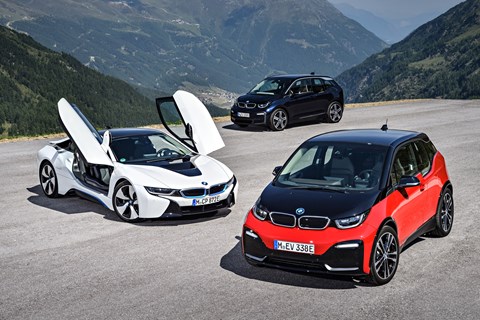
BMW electric: what’s to come?
Naming-wise, expect BMW’s forthcoming EVs to continue the trend seen in the iX3. For example, the i4 will be the BEV version of the 4-series Gran Coupe, and so on. They’ll look largely similar to their ICE counterparts, too; BMW doesn’t want to scare off potential purchases with anything too brash.
i1
The i3 is due to be killed in the next few years, following a brief stay of execution in the form of another facelift and larger battery. There’ll be a new i3 to take its place – an all-electric version of the familiar-looking 3-series, but an as yet unseen i1 model was planned to take the current i3’s place.
One year ago, the i1 was almost ready for production, but now our sources suggest the board isn’t so sure. Instead of using the UKR/FAAR platform, it’s possible the new i1 will use either a new N-car platform or the same as Mini EV originally developed in co-operation with China’s Great Wall Motors.
The compact i1 was expected to be revealed around 2024 as a logical successor to BMW’s iconic city EV. We say logical rather than spiritual, because the i1 was expected to be a compact five-door that’ll occupy the same space at the current i3, but without any of the current car’s avant-garde charm.
iX1
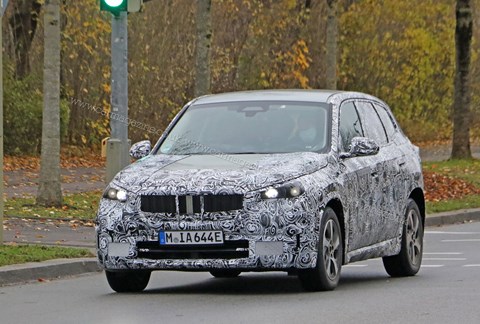
This model will eventually replace the i3 as the marque’s entry-level offering. Another UKL/FAAR spin off, we do not expect a tall-roof metro cruiser but a compact crossover which competes in the same segment as the VW ID.4.
Insiders expect this model to get its own lower-drag livery, a totally versatile interior and several different drivetrain configurations. Unlike the relatively expensive iX3, the smaller model due in late 2022 will likely be more aggressively priced even though AWD and a bespoke cockpit are standard.
Read more about the iX1 here
i3
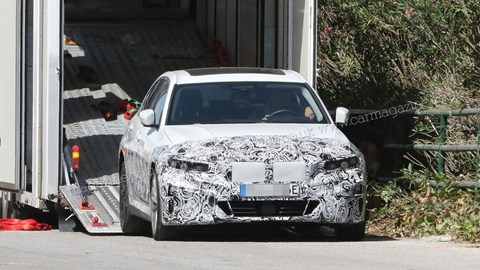
Based on the long-wheelbase 3-series, the substantially less sophisticated i3 namesake is believed to copy the low-cost approach of the iX3 – no AWD option, no high-performance spin-off, no fancy batteries but all the latest connectivity tricks. Bland as it may be, this model is a must-have for the world’s biggest and most profitable car market.
Aside from the lack of exhaust pipes the only real feature that gives the prototype away is the ‘Electric Test Vehicle’ badge Munich helpfully slaps on its EVs.
Read more about the forthcoming i3 here
iX3
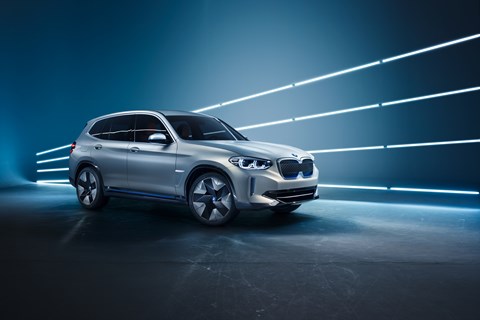
The BMW iX3 is, as the name suggests, an all-electric version of the X3 SUV. While predominantly designed for the Chinese market and built there, BMW’s treating it as a global model; makes sense given its on-trend SUV shape. Its 74kWh battery pack gives a claimed 279 miles. A 282bhp, 295lb ft electric motor gives reasonably lively performance, and the amount of passenger space inside is unchanged from a regular X3. It’s still based on the somewhat compromised CLAR architecture, so doesn’t get the packaging advantages of ground-up EV rivals such as the Mercedes EQ and Audi e-Tron.
Since the new iX3 must cover an even broader segment of the market than the high-end iX, we expect a wider choice of battery sizes and power outputs to follow.
Read more about the iX3 here
i4
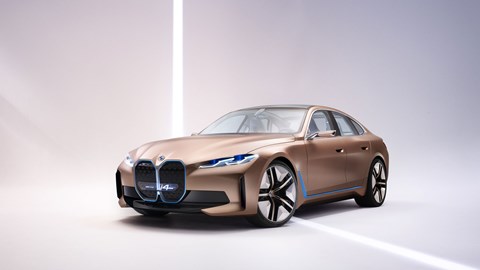
Based on the 4-series Gran Coupe and not on the electric 3-series saloon, the i4 is currently undergoing final validation tests before it hits showrooms.
We’ve seen a concept and already spotted the production EV out testing – and it’s another EV that sneaks below the radar in terms of its styling.
The final specs will likely mirror what we’ve seen in the concept car. With that in mind, BMW says the Concept i4 will have a range of 373 miles (WLTP), 523bhp, and a top speed of 124mph. Acceleration is as brutal as you’d expect from an electric Gran Coupe: the 0-62mph sprint takes around 4.0 seconds. Competitive, and around the same as of one Beemer’s own V8-powered cars.
Expect the line-up to include remarkably efficient batteries (65/85kWh), the choice of RWD and AWD, and a wide performance frame spanning 300bhp to the iM4’s 530bhp, sources say.
Read more about the BMW i4
i5 and M5 EV
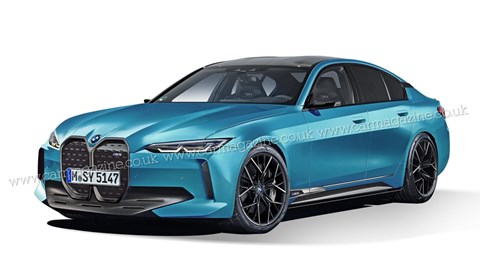
Arriving in 2024, the next M5 will be a dramatic change from the current F90. Why? Because it’s expected to be the first M car to be exclusively electrified – either as a ‘Power PHEV’ or full-electric car. There’s that philosophy of powertrain choice again…
BMW is openly working on the ‘power BEV’, using a 5-series mule. That model has three e-motors borrowed from the powertrain we’ll see in the electric i4 and the iNext SUV. In terms of design, we are told that the days of excessive shiny bits and detailing are finally over.
Since the i variant has less demanding cooling requirements than the petrol and diesel versions, the front end of the i5 is said to look pleasantly toned-down. AWD is standard, the biggest energy pack is reportedly good for 110kWh, and the 600bhp iM5 should satisfy most needs for speed, even if it can’t match the 1000bhp of the Plaid Tesla Model S.
Read more about the electric M5 here
i7
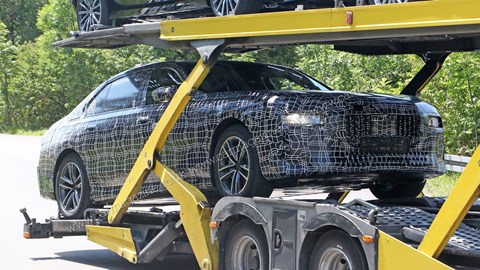
CAR understands the i7 be revealed in 2022 around the same time as the next 7-series, but it’ll use an all-new platform similar to the one underpinning the iNext and i5.
We’ve got spy pictures that show a prototype EV wrapped in a camo, and featuring BMW’s ‘Electric Test Vehicle’ badge, confirming its powertrain. Munich has been very thorough in disguising the front of the car, but we can still some make some educated guesses about the new i7’s face.
Be prepared for one last culture shock; the next BMW flagship combines that gothic twin-towers grille with an oddball set of stacked headlights – slit eyes on top, double pupils below.
The most radically shaped model is the M7 (and its brother in arms, the iM7) which features even bigger front air intakes and plenty of blacked-out panelling.
Like i3 v2.0, i4 and i5, the i7 will incorporate the company’s own fully scalable HEAT system (highly integrated electric drivetrain) which wraps up e-motor(s), control unit and cooling circuit in one surprisingly compact package.
The most potent battery is rated at 120kWh while the brawniest configuration churns out a remarkable 665bhp in the iM7.
Read more about the i7 here
And finally, the iX iNext
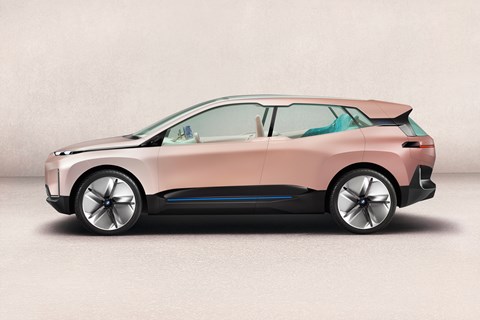
Here it comes at last, the golden electric egg hatched by the previous BMW management under messieurs Krüger, Fröhlich and Duesmann. Currently codenamed iNext, the next all-electric SUV will also go into production in 2021. BMW is already testing prototypes of the new full-size BEV and promises Level 3 automated driving when the car goes on sale. Its powertrain will be similar to that of the i4, so is promising a rough 370-mile range and all-wheel drive.
At a projected 30,000 units per year, the new jack of all trades aims as high as the Audi e-Tron and the Porsche Taycan, but the iX still has a lot on its plate. It is the pivotal effort of the i sub-brand, it epitomises the New Premium for the BMW group, and it needs to reimagine the ultimate driving machine for a cleaner future. To do so, its makers promise to deliver a vehicle which is three cars in one – functional and practical like an X5, trendy and dynamic like an X6, prestigious and luxurious like an X7. Bets are being accepted.
iNext is one of two so-called ‘enabler models’ within the BMW range, which act as high-tech showpieces and halo cars for BMW. The most powerful of three versions is expected to draw energy from a 105kWh battery and lay down up to 400kW (circa 536bhp) of AWD e-power, with a 2.8sec 0-62mph acceleration time and a range of over 375 miles.
‘When we started with the BMW i3 and BMW i8 it was all about enabling us for electromobility and also with the strong focus on holistic sustainability,’ BMW’s electromobility spokesperson Wieland Bruch told CAR.
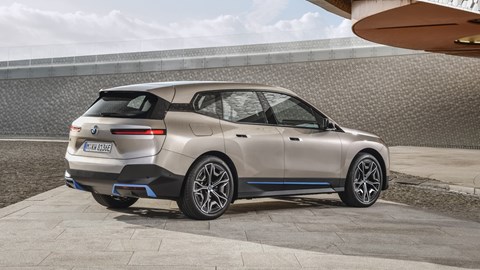
‘That role of BMW i has now passed. We have rolled out the technology to more and more models of the BMW mother brand and also towards Mini. Now the next highlight comparable to an i3 and i8 will be the iNext.’
‘The purpose of the iNext is not to become a whole model family in itself, the role of the iNext is to pioneer new fields of technology,’ he added. ‘You all know that the car will be fully electric, but it will be full electric in combination with advanced automatic driving features, and with an interior of the future that will pave the way for many other model lines in the mother brand portfolio.’
Read more about the iNext
And what about the next i8?
BMW teased us with a concept named the Vision M Next at the 2019 Frankfurt motor show. The Vision M Next would’ve been a huge milestone for the M division, ultimately paving the way for a full-electric M car. But it’s been cancelled.
Design-wise, the M Next took two reference points. The first was the mid-engined, spaceframed BMW M1 sports car that laid exotic foundations for the M division in 1978. The second was the radical BMW i8.
But when we interviewed then R&D boss Klaus Frohlich in mid-2019, he reassured us that his ‘power PHEV’ is more than motor show eye candy: ‘We are no-nonsense guys, we deliver what we promise.’ That was until Coronavirus and the increasing costs R&D forced Munich to redirect cash into the more mainstream EVs you’ve just read about.
All the electric Mercedes-Benz cars
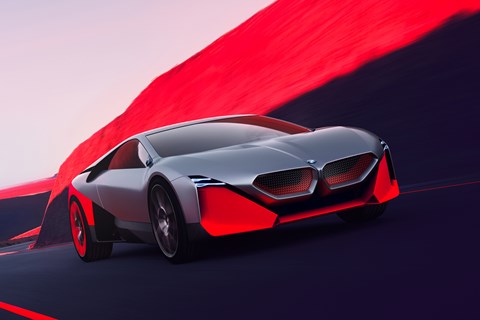
Best used electric cars
Future electric cars: upcoming EVs